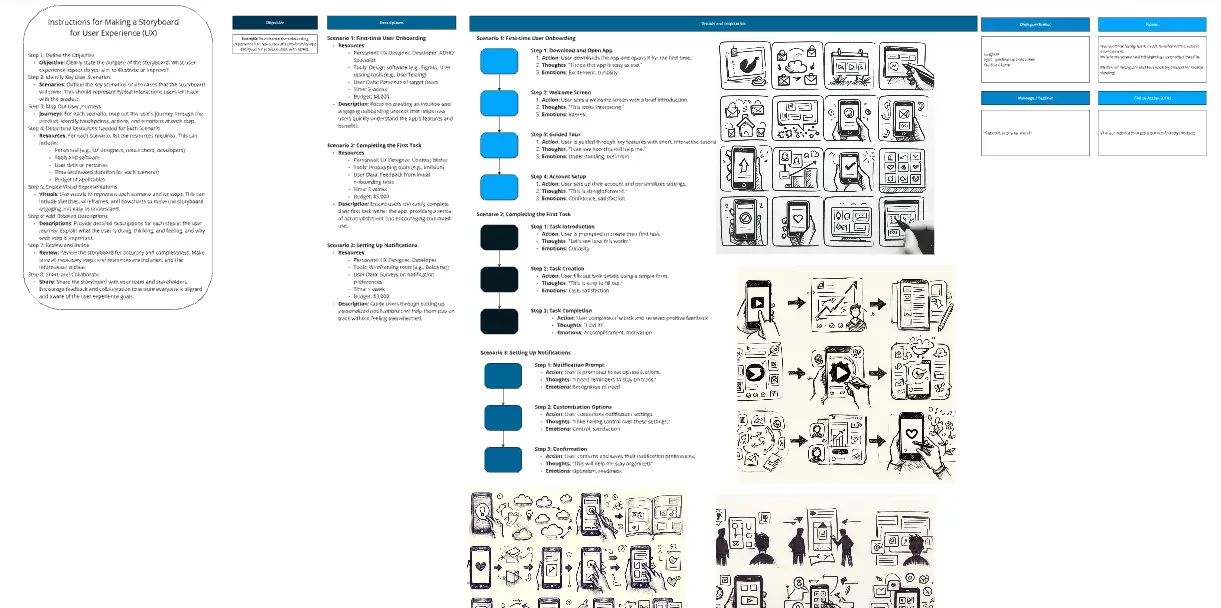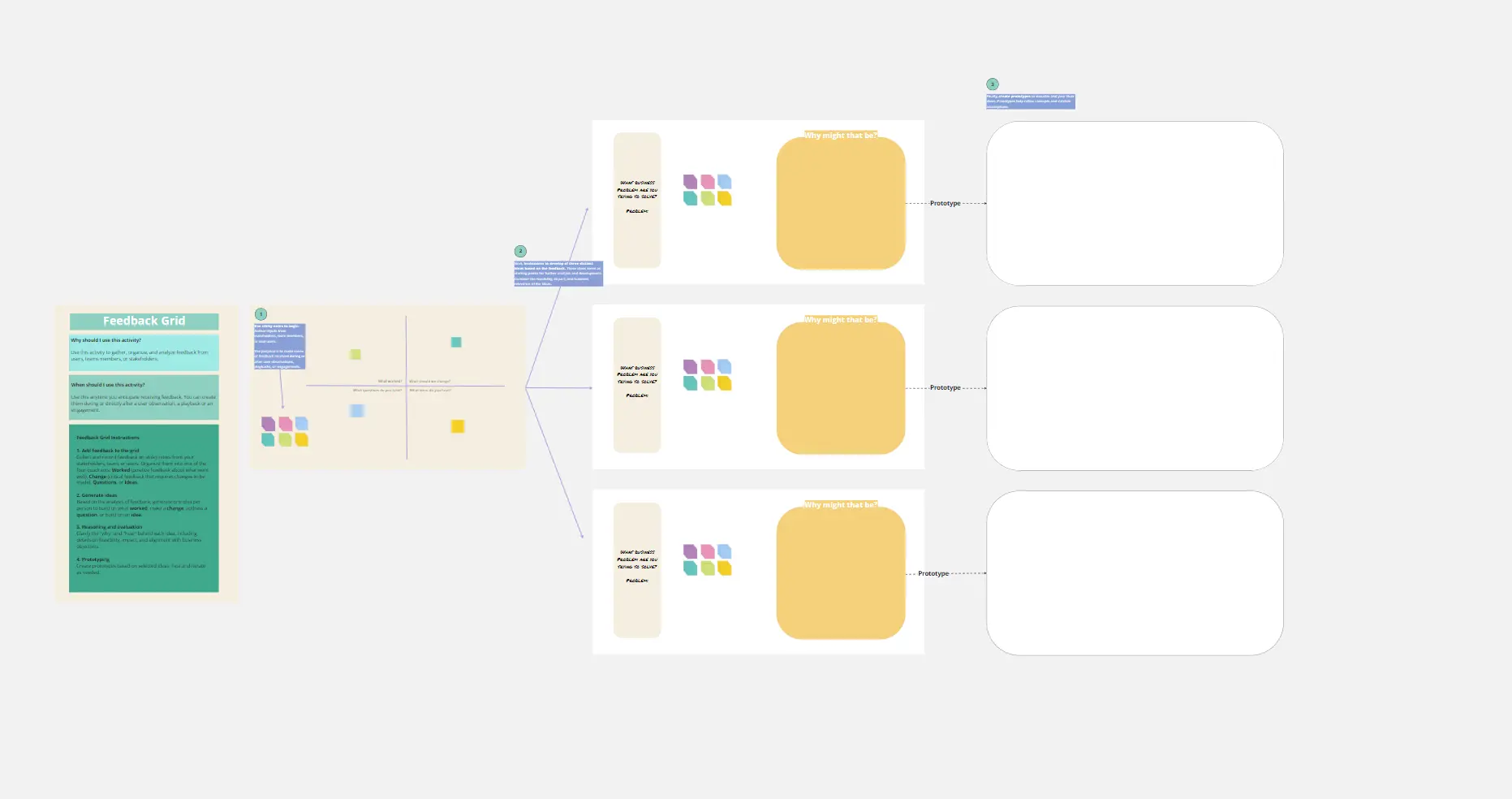Storyboard for Software Development
The "Storyboard for Software Development" template from SlideTeam is designed to visually organize and communicate the various stages of a software development project. Here's a detailed description of the template and why someone would want to use it:
Template Description
Overview Sections
Planning: This section includes fields for outlining key features, user personas, and user stories. It helps to define the project's scope and goals clearly.
Designing: This section is for sketching wireframes, detailing interaction flows, and annotating UI elements. It serves as a visual guide for the design phase.
Developing: This area focuses on breaking down user stories into tasks, coding implementation details, and tracking regular progress check-ins.
Testing: It includes sections for developing test cases, conducting user testing, and iterating based on feedback. This helps in ensuring the software meets quality standards.
Deploying: This section covers the preparation of the deployment plan, setting up the deployment environment, and executing the deployment process.
Feedback: This part is for gathering user feedback, analyzing it, and planning future iterations based on insights gained.
Visual Elements
Slides/Frames: Each section is typically broken down into individual slides or frames, each representing a specific aspect of the project stage.
Icons and Graphics: Visual icons and graphics are used to represent different components like user personas, wireframes, and test cases, making the storyboard more intuitive.
Text Boxes: Text areas for descriptions, annotations, and notes to provide detailed information about each stage.
Interactive Elements
Hyperlinks: Some templates may include hyperlinks to additional resources or detailed documentation.
Editable Fields: Users can fill in or modify text and visual elements directly in the template to suit their project needs.
Why Use This Template?
Structured Organization
The template provides a structured way to organize and present different stages of a software development project, making it easier to follow the project's progress from planning to feedback.
Enhanced Communication
It facilitates clear communication among team members and stakeholders by visually representing the project’s key components and stages. This ensures everyone is aligned with the project goals and current status.
Comprehensive Planning and Tracking
By breaking down the project into detailed sections, the template helps in thorough planning and tracking of tasks, interactions, and feedback. It ensures that no aspect of the project is overlooked.
Visual Clarity
The use of visual elements like wireframes, icons, and annotated screens enhances understanding and clarity. It provides a clear picture of the software’s design and functionality.
Iterative Development
It supports an iterative approach by documenting feedback and planned improvements. This helps in continuously refining the software based on real user input.
Efficient Collaboration
The template is useful for collaborative projects, allowing multiple team members to contribute to different sections, update progress, and share insights effectively.
Using the "Storyboard for Software Development" template can streamline the development process, improve project visibility, and ensure all aspects of the software development lifecycle are comprehensively covered and communicated.
Categories
Similar templates





Comments
Read our Community Guidelines and Terms of Use.